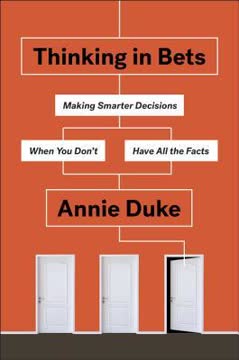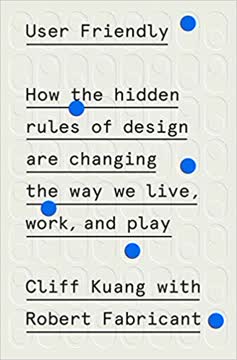Key Takeaways
1. The Brand Flip: From Company-Centric to Customer-Centric
"Today's customers reject that authority, and at the same time require a measure of control over the products they love. They no longer buy brands. They join brands."
Power shift to customers. The digital age has flipped the traditional brand model, putting customers in control. Companies must now adapt to this new reality or risk becoming obsolete. This shift is driven by increased connectivity, empowering customers to shape brands through their choices, advocacy, and feedback.
From buying to joining. Customers now seek more than just products; they want to be part of something meaningful. Successful brands invite customers to participate in shaping the brand experience, fostering a sense of ownership and loyalty. This collaborative approach requires companies to be more transparent, responsive, and aligned with customer values.
Key aspects of the brand flip:
- Customers as co-creators of brand value
- Emphasis on customer experience over product features
- Shift from one-way messaging to two-way conversations
- Focus on building communities around shared values
2. Meaning Over Products: Customers Seek Identity and Purpose
"A successful brand can become a touchstone in a customer's life—a vivid symbol of what's useful, delightful, and even magical."
Identity building. Modern consumers use brands as building blocks for their personal identities. They choose brands that align with their values, aspirations, and self-image. This shift requires companies to think beyond product features and focus on the deeper meaning their brand represents in customers' lives.
Purpose-driven brands. Successful brands articulate a clear purpose that resonates with their target audience. This purpose goes beyond making money and addresses how the brand contributes to customers' lives and society at large. By connecting with customers on this deeper level, brands create stronger emotional bonds and loyalty.
Elements of meaningful brands:
- Clear articulation of brand purpose
- Alignment with customer values and aspirations
- Focus on how the brand enhances customers' lives
- Creation of emotional connections beyond product utility
3. Tribes Replace Segments: The Power of Customer Communities
"The best question to ask any new-product marketer is not 'What size is the market?' but 'You and what army?'"
From segments to tribes. Traditional market segmentation is giving way to the concept of customer tribes - groups of people who share not just interests, but information and a sense of identity. These tribes form organically around brands that resonate with their values and provide platforms for connection.
Tribal power. Tribes are powerful advocates for brands they believe in. They spread word-of-mouth recommendations, defend the brand against criticism, and provide valuable feedback for improvement. Companies that successfully build and nurture tribes create a sustainable competitive advantage.
Characteristics of strong brand tribes:
- Shared values and sense of identity
- Active communication and information sharing
- Advocacy and defense of the brand
- Co-creation of brand experiences
- Sense of belonging and community
4. Authenticity Trumps Authority: Building Trust Through Purpose
"To achieve authenticity with your tribe, you have to begin with purpose."
Shift from authority to authenticity. In the age of information, customers no longer accept brand messages at face value. They seek authentic brands that align with their values and demonstrate consistency between words and actions. This requires companies to be transparent, admit mistakes, and show genuine care for customers and society.
Purpose as foundation. A clear, meaningful purpose serves as the foundation for brand authenticity. It guides decision-making, shapes company culture, and creates a genuine connection with customers. When purpose aligns with customer values, it builds trust and loyalty that withstand market fluctuations and competitive pressures.
Elements of brand authenticity:
- Transparency in communication and practices
- Consistency between brand promises and actions
- Genuine care for customer well-being
- Alignment of company values with customer values
- Willingness to admit and learn from mistakes
5. Design Experiences, Not Just Products: Creating Memorable Touchpoints
"You can't decide a great customer experience. You have to design it."
Experience-centric approach. Successful brands focus on designing holistic customer experiences rather than just products. This involves carefully crafting every touchpoint where customers interact with the brand, from advertising to product use and customer service.
Touchpoint strategy. Companies should map out and prioritize key brand touchpoints, ensuring each one reinforces the brand's purpose and values. By creating a cohesive and memorable experience across all touchpoints, brands can differentiate themselves and build stronger emotional connections with customers.
Key elements of experience design:
- Mapping of all customer touchpoints
- Consistency in brand message across touchpoints
- Focus on emotional impact and memorability
- Continuous improvement based on customer feedback
- Integration of digital and physical experiences
6. Simplicity in the Age of Overchoice: Less is More
"A mess is counterproductive when you're trying to create meaningful differentiation for your brand."
Combating overchoice. In a world of endless options, brands that offer simplicity and clarity stand out. Customers appreciate brands that help them navigate choices and make decisions with confidence. This requires companies to focus on core offerings and streamline their product lines and communication.
Designing for simplicity. Simplicity should be a guiding principle in all aspects of brand design, from product development to user interfaces and marketing messages. By eliminating unnecessary complexity, brands can create more intuitive and enjoyable experiences for their customers.
Strategies for brand simplicity:
- Focus on core products and services
- Clear, concise communication
- Intuitive user interfaces and experiences
- Reduction of unnecessary features or options
- Streamlined decision-making processes for customers
7. Liquid Brands: Adapting to Rapid Change
"Flipping the brand triggers a 'phase change'—a structural shift from a company-focused business to a customer-focused business."
Embracing fluidity. In a rapidly changing market, brands must be adaptable and responsive. Liquid brands can flow across platforms, adjust to new customer needs, and take advantage of emerging opportunities. This requires a shift from rigid brand guidelines to more flexible, principle-based approaches.
Continuous evolution. Liquid brands are always in beta, constantly evolving based on customer feedback and market changes. This approach allows brands to stay relevant and maintain strong connections with their customers over time.
Characteristics of liquid brands:
- Adaptability to new platforms and channels
- Responsiveness to customer feedback
- Flexibility in brand expression
- Continuous innovation and improvement
- Ability to enter adjacent markets and categories
8. Empowering Customers: The Key to Brand Loyalty
"The best brand builders see greatness in their customers, and figure out ways to enable it."
Customer empowerment. Successful brands go beyond satisfying customer needs to actively empowering their customers. This involves providing tools, knowledge, and opportunities for customers to grow, achieve their goals, and express their identities through the brand.
Co-creation and collaboration. Empowered customers become active participants in shaping the brand. By inviting customer input and collaboration, brands can tap into the collective creativity and passion of their audience, leading to stronger loyalty and advocacy.
Ways to empower customers:
- Providing educational resources and tools
- Creating platforms for customer creativity and expression
- Offering opportunities for customers to influence product development
- Recognizing and rewarding customer contributions
- Facilitating connections among customers
9. From Storytelling to Storyframing: Enabling Customer Narratives
"Customers don't want to be told, they want to tell. They long to be the heroes of their own journey."
Shift to storyframing. Traditional brand storytelling is giving way to storyframing - providing a framework within which customers can create and share their own narratives. This approach recognizes customers as the heroes of their own stories, with the brand playing a supporting role.
Facilitating customer stories. Brands should create opportunities and platforms for customers to share their experiences, achievements, and creative uses of products. By amplifying these customer stories, brands can create authentic connections and inspire others to engage with the brand.
Elements of effective storyframing:
- Creation of platforms for customer storytelling
- Celebration of customer achievements and creativity
- Integration of user-generated content in brand communication
- Design of products and experiences that inspire stories
- Facilitation of connections between customer stories
10. Measuring Brand Success: The Brand Commitment Scale
"The Brand Commitment Scale (BCS), or customer ladder, is a simple tool for measuring the progress of a brand from customer satisfaction to customer empowerment."
Beyond traditional metrics. The Brand Commitment Scale offers a more comprehensive way to measure brand success, focusing on the depth of customer relationships rather than just sales or market share. This approach aligns with the customer-centric nature of flipped brands.
Ladder of engagement. The BCS measures four levels of customer commitment: satisfaction, delight, engagement, and empowerment. By tracking progress on this ladder, companies can identify areas for improvement and invest in strategies that deepen customer relationships.
Components of the Brand Commitment Scale:
- Customer Satisfaction: Basic trust and fulfillment of expectations
- Customer Delight: Positive emotional response and willingness to recommend
- Customer Engagement: Active participation and emotional attachment
- Customer Empowerment: Deep integration of the brand into customer identity and success
Last updated:
FAQ
What's "The Brand Flip" about?
- Customer-Centric Shift: "The Brand Flip" by Marty Neumeier explores the shift in power from companies to customers, emphasizing that customers now run companies.
- Branding Evolution: It discusses how branding has evolved from being company-driven to customer-driven, where customers create the brand through their experiences and advocacy.
- Strategic Framework: The book provides a framework for companies to adapt to this new reality by focusing on customer empowerment and engagement.
- Practical Insights: It offers practical insights and strategies for businesses to thrive in a market where customers demand more than just products—they seek meaning and belonging.
Why should I read "The Brand Flip"?
- Understanding Modern Branding: It provides a deep understanding of how modern branding works in a customer-driven market.
- Actionable Strategies: The book offers actionable strategies for businesses to adapt and succeed in a rapidly changing environment.
- Customer Empowerment Focus: It emphasizes the importance of empowering customers, which is crucial for building lasting brand loyalty.
- Innovative Perspective: Marty Neumeier's insights challenge traditional business models, offering a fresh perspective on brand management.
What are the key takeaways of "The Brand Flip"?
- Customer Ownership: Brands are owned by customers, not companies, and are defined by customer perceptions and experiences.
- Meaning Over Products: Customers seek meaning and belonging, not just products or features.
- Tribe Building: Successful brands build tribes, not just customer segments, fostering a sense of community and shared identity.
- Empowerment and Engagement: Empowering customers and engaging them in the brand narrative is essential for long-term success.
How does Marty Neumeier define a brand in "The Brand Flip"?
- Customer's Gut Feeling: A brand is defined as a customer's gut feeling about a product, service, or company.
- Beyond Logos and Products: It is more than a logo or a product; it's about the reputation and relationship with customers.
- Emotional Connection: A brand creates an emotional connection and becomes a symbol in the customer's life.
- Dynamic and Evolving: Brands are dynamic and evolve with customer interactions and perceptions.
What is the Brand Commitment Matrix in "The Brand Flip"?
- Two-Column Framework: The Brand Commitment Matrix is a two-column framework aligning customer identity with company purpose.
- Customer and Company Alignment: It includes customer identity, aims, and mores on one side, and company purpose, onlyness, and values on the other.
- Ensures Brand Alignment: The matrix ensures that the brand aligns with customer expectations and company values.
- Foundation for Relationships: It serves as a foundation for building strong, lasting relationships between the brand and its customers.
How does "The Brand Flip" suggest companies should handle competition?
- Differentiate, Don't Compete: The book advises companies to focus on differentiation rather than direct competition.
- Unique Market Position: Companies should stake out a unique market position that they can own and defend.
- Onlyness Concept: Emphasizes achieving "onlyness," where a brand is the only one of its kind in its category.
- Avoid Price Wars: By differentiating, companies can avoid price wars and focus on creating value for customers.
What role do tribes play in "The Brand Flip"?
- Community Building: Tribes are essential for building a community around a brand, fostering loyalty and engagement.
- Shared Identity: Tribes consist of people who share interests and information, creating a sense of belonging.
- Support and Growth: Brands should support and grow their tribes, rather than targeting them as market segments.
- Empowerment and Advocacy: Tribes empower customers to become advocates for the brand, enhancing its reach and impact.
How does "The Brand Flip" address the concept of authenticity?
- Purpose-Driven Authenticity: Authenticity begins with a clear company purpose beyond making money.
- Alignment with Customer Identity: Authentic brands align their purpose with the identity and values of their customers.
- Avoiding Inauthenticity: The book warns against inauthentic practices, such as misleading advertising, which can damage brand trust.
- Building Trust: Authenticity builds trust and strengthens the relationship between the brand and its customers.
What is the significance of customer empowerment in "The Brand Flip"?
- Central to Success: Customer empowerment is central to a brand's success in the modern market.
- Engagement and Loyalty: Empowered customers are more engaged and loyal, contributing to the brand's growth.
- Co-Creation: Customers are seen as co-creators of the brand, influencing its direction and success.
- Long-Term Relationships: Empowerment leads to long-term relationships, where customers actively participate in the brand's narrative.
How does "The Brand Flip" suggest companies should approach customer experience?
- Design, Don't Decide: Companies should design customer experiences rather than simply deciding them.
- Touchpoints as Experiences: Each touchpoint should be a mini-representation of the brand, offering meaningful experiences.
- Empathy and Analysis: Use empathy and data analysis to create experiences that resonate with customers.
- Continuous Improvement: Customer experiences should be continuously improved based on feedback and insights.
What are the best quotes from "The Brand Flip" and what do they mean?
- "A brand isn’t what you say it is; it’s what they say it is." This highlights the shift in brand ownership from companies to customers.
- "Customers don’t want to be told, they want to tell." Emphasizes the importance of allowing customers to create their own brand narratives.
- "The best brand builders see greatness in their customers, and figure out ways to enable it." Focuses on empowering customers to achieve their potential.
- "You can’t decide a great customer experience. You have to design it." Stresses the importance of intentional design in creating impactful customer experiences.
How does "The Brand Flip" redefine the role of marketing?
- From Selling to Enrolling: Marketing shifts from selling products to enrolling customers in the brand's mission.
- Focus on Relationships: Emphasizes building relationships over transactions, fostering long-term loyalty.
- Customer-Centric Approach: Marketing strategies should be centered around customer needs and aspirations.
- Creating Meaning: Marketing should create meaning and value for customers, aligning with their personal goals and identities.
Review Summary
The Brand Flip receives high praise from readers, with an average rating of 4.31 out of 5. Reviewers commend its insights on modern branding, customer-centric approach, and practical frameworks. Many consider it a must-read for marketers and entrepreneurs, appreciating its concise format and thought-provoking content. Some readers note it as a valuable follow-up to Neumeier's previous work, "The Brand Gap." While a few criticize the lack of real-world examples, most find the book's ideas compelling and applicable to various industries.
Similar Books










Download PDF
Download EPUB
.epub digital book format is ideal for reading ebooks on phones, tablets, and e-readers.








